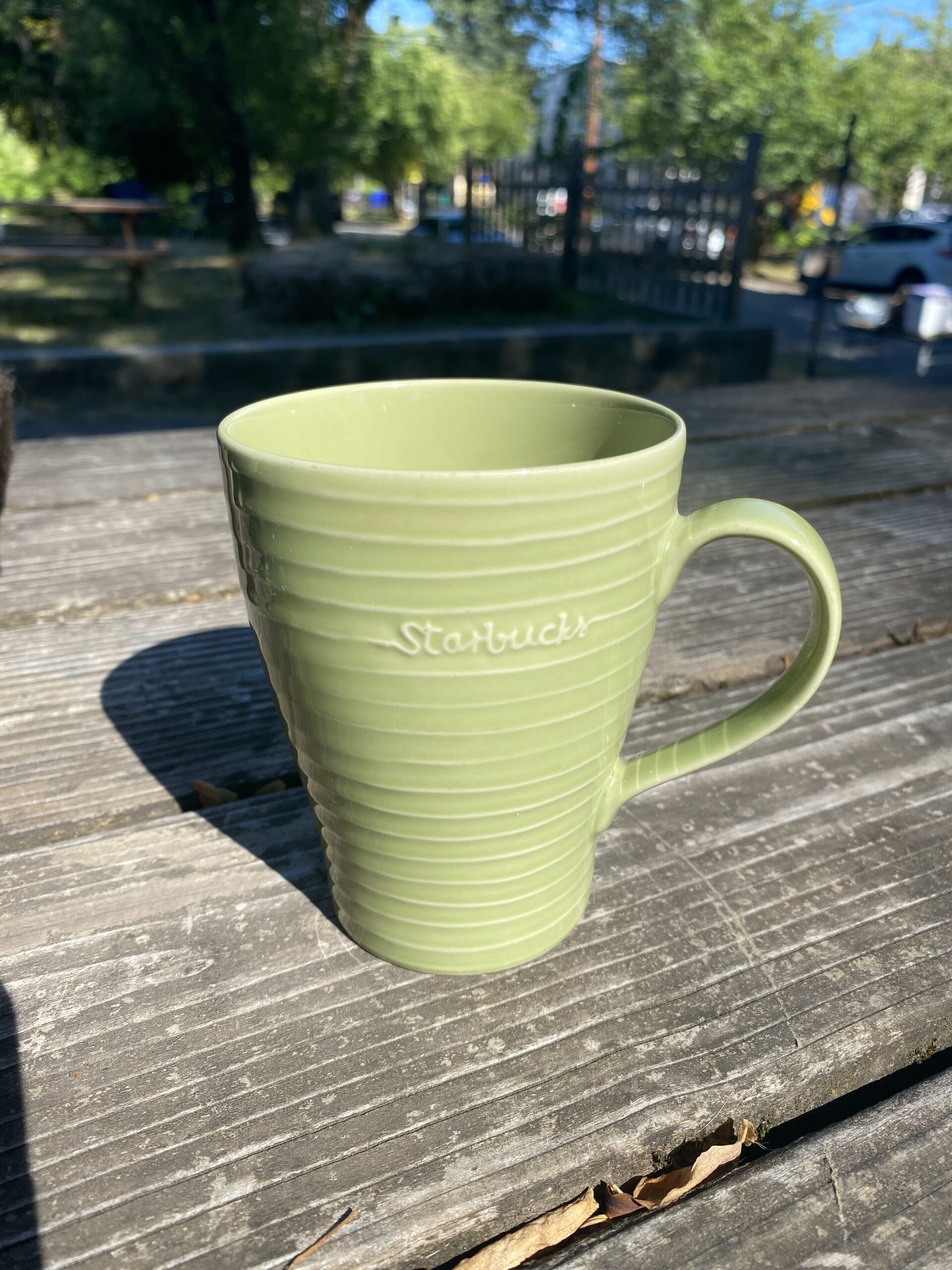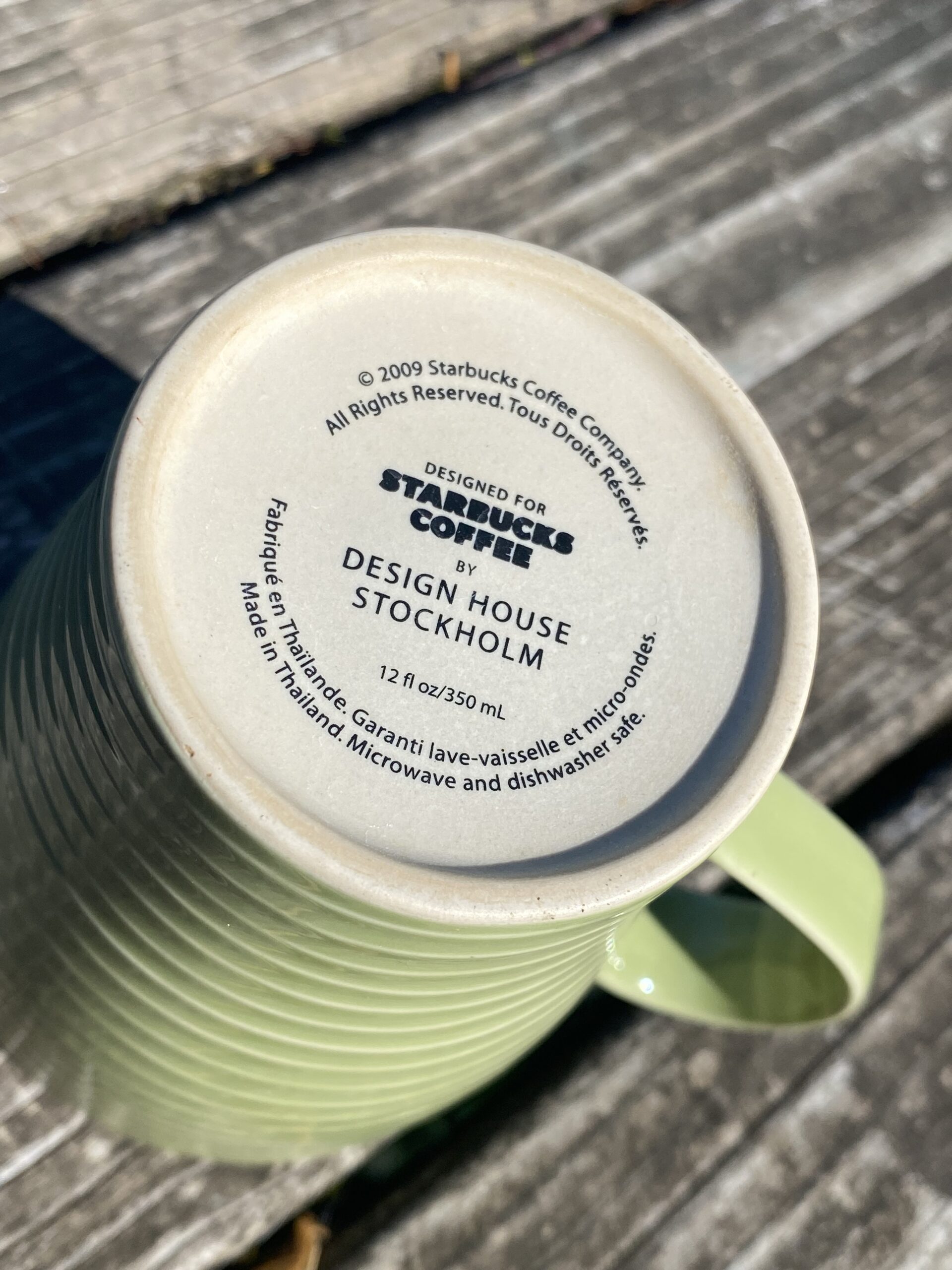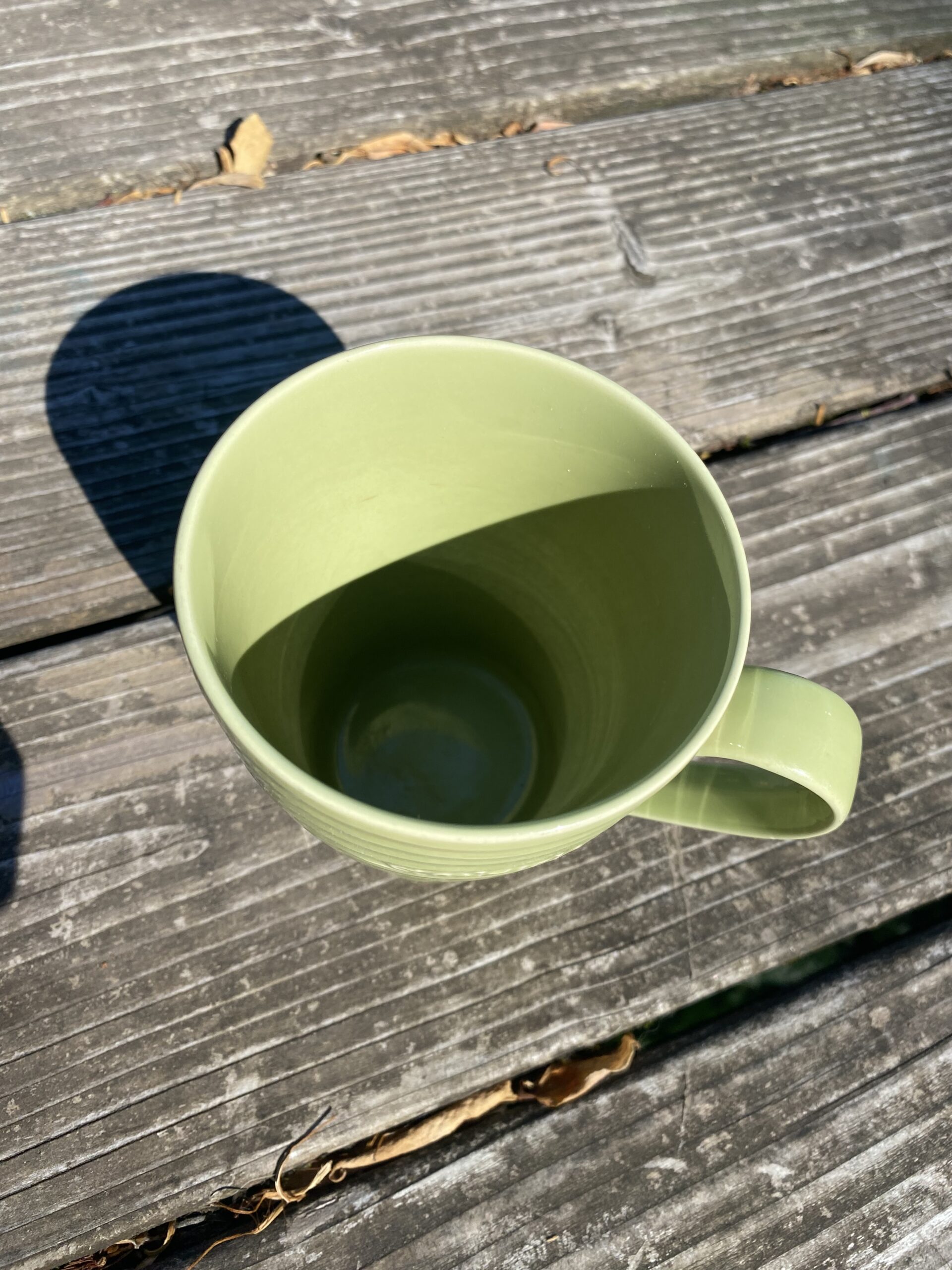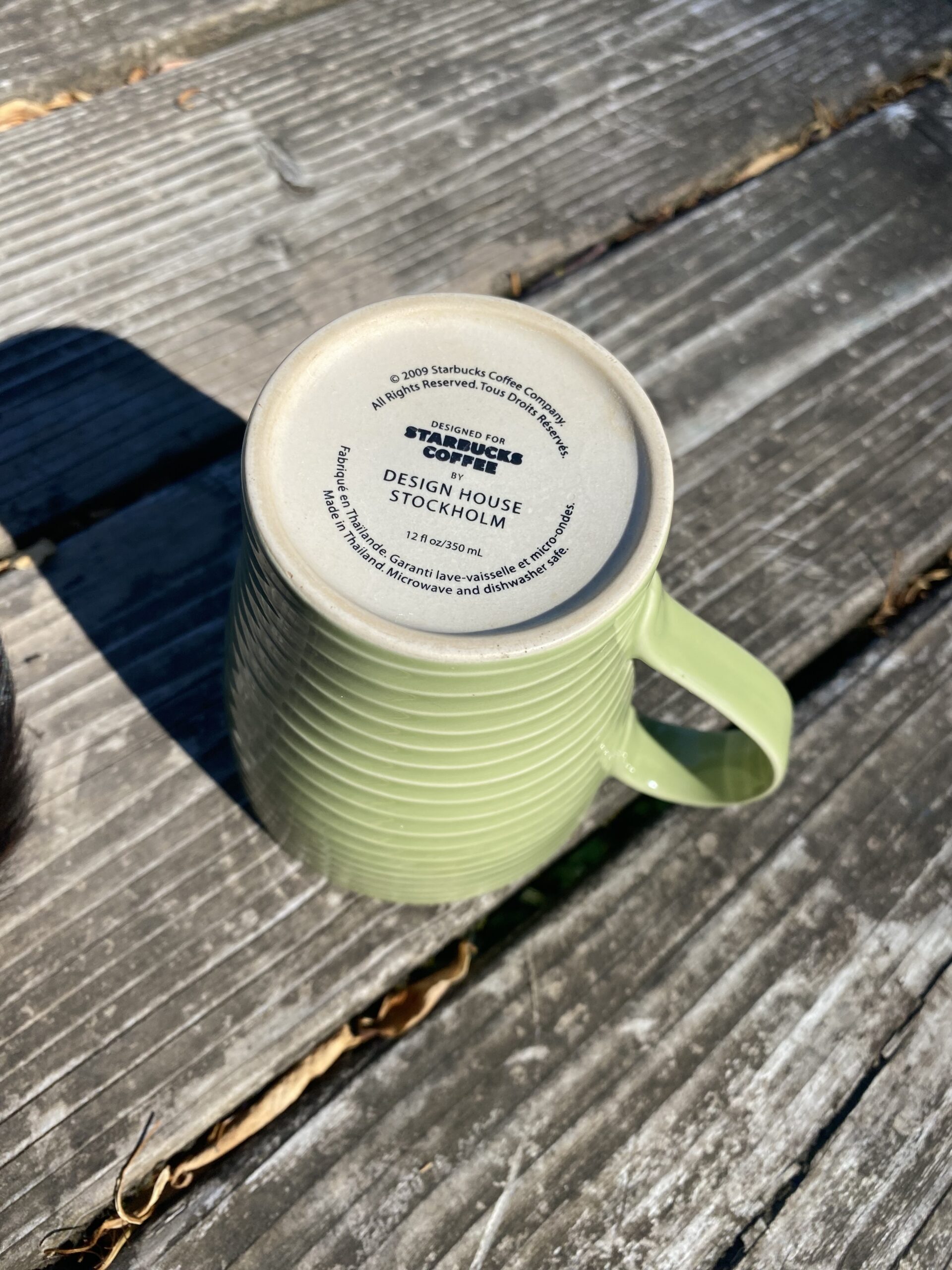XRF test results for 2009 Design House Stockholm green glazed Starbucks mug sent in by Shelly in California
For those new to this website:
Tamara Rubin is a multiple-Federal-award-winning independent advocate for childhood Lead-poisoning prevention and consumer goods safety, and a documentary filmmaker. She is also a mother of Lead-poisoned children (two of her sons were acutely Lead-poisoned in 2005). Since 2009, Tamara has been using XRF technology (a scientific method used by the U.S. Consumer Product Safety Commission) to test consumer goods for toxicants (specifically heavy metals — including Lead, Cadmium, Mercury, Antimony, and Arsenic). All test results reported on this website are science-based, accurate, and replicable. Items are tested multiple times to confirm the test results for each component tested. Tamara’s work was featured in Consumer Reports Magazine in February of 2023 (March 2023 print edition).
Published: July 18, 2023 — Tuesday
Below are full XRF test results for the green glazed Starbucks Mug (Made in Thailand) pictured above (additional photos below as well).
For context: any level under 90 ppm Lead in the glaze, paint, or coating on an item is considered safe for children by all modern standards related to consumer goods, and any reading under 40 ppm Cadmium is considered safe for children by all modern standards. While this mug is positive for traces of Lead, Cadmium, and Antimony, it falls within the safe range by most standards.
I would not personally choose to have any item that tests positive for Lead in my home, however, if you offered me a cup of tea (or similar beverage) in this mug when I was visiting your home I would not necessarily object. While no study has been done (that I am aware of) about the potential for low-level impacts or exposure from a mug used daily that tests positive for trace amounts of Lead (amounts this low), it is ideally preferable to use 100% Lead-free mugs — especially when using those mugs daily for drinking acidic and hot beverages like coffee or tea. The link below has guidelines for choosing Lead-free mug options.
Reading #1) Green Glazed Side of Cup
60-second test (repeated multiple times to confirm results)
- Lead (Pb): 49 +/- 13 ppm
- Cadmium (Cd): non-detect / negative
- Tin (Sn): 18 +/- 10 ppm
- Mercury (Hg): non-detect / negative
- Selenium (Se): non-detect / negative
- Barium (Ba): 3,302 +/- 118 ppm
- Arsenic (As): non-detect / negative
- Chromium (Cr): 1,214 +/- 375 ppm
- Antimony (Sb): non-detect / negative
- Nickel (Ni): 510 +/- 76 ppm
- Copper (Cu): 191 +/- 36 ppm
- Zinc (Zn): 5,666 +/- 168 ppm
- Manganese (Mn): non-detect / negative
- Zirconium (Zr): 11,100 +/- 300 ppm
- Iron (Fe): 635 +/- 134 ppm
- Platinum (Pt): 253 +/- 57 ppm
- Cobalt (Co): 179 +/- 65 ppm
- Bismuth (Bi): 63 +/- 15 ppm
- Chlorine (Cl): non-detect / negative
- No other metals were detected in consumer goods mode.
Reading #2) Logo Marking on Unglazed Bottom of Cup
60-second test (repeated multiple times to confirm results)
- Lead (Pb): 115 +/- 14 ppm
- Cadmium (Cd): 9 +/- 5 ppm
- Tin (Sn): 20 +/- 8 ppm
- Mercury (Hg): non-detect / negative
- Selenium (Se): non-detect / negative
- Barium (Ba): 816 +/- 37 ppm
- Arsenic (As): non-detect / negative
- Chromium (Cr): non-detect / negative
- Antimony (Sb): 16 +/- 11 ppm
- Nickel (Ni): non-detect / negative
- Copper (Cu): non-detect / negative
- Zinc (Zn): 106 +/- 18 ppm
- Manganese (Mn): non-detect / negative
- Zirconium (Zr): non-detect / negative
- Indium (In): 10 +/- 6 ppm
- Iron (Fe): 12,100 +/- 400 ppm
- Platinum (Pt): 46 +/- 31 ppm
- Cobalt (Co): non-detect / negative
- Bismuth (Bi): 130 +/- 13 ppm
- Chlorine (Cl): non-detect / negative
- No other metals were detected in consumer goods mode.
Some additional reading that may be of interest
- More Starbucks products we have tested
- More pieces marked “Made In Thailand” that we have tested
- Safer choices for mugs
- The “Ceramic Mug” category of articles on this website
- An overview article about the concern for Lead in pottery/ceramics
- The link to the “Menu” for this website
~ End ~
Never Miss an Important Article Again!
Join our Email List












